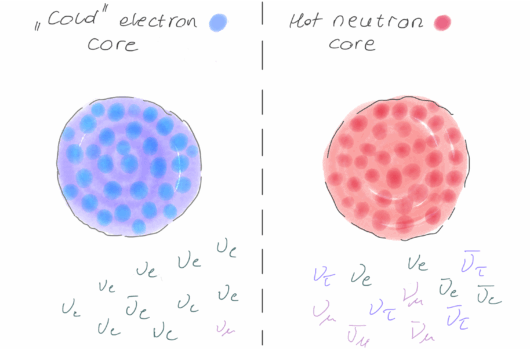Statistical significance of the sterile-neutrino hypothesis in the context of reactor and gallium data
Statistical significance of the sterile-neutrino hypothesis in the context of reactor and gallium data
View
Abstract
We evaluate the statistical significance of the 3+1 sterile-neutrino hypothesis using ![]() and
and ![]() disappearance data from reactor, solar and gallium radioactive source experiments. Concerning the latter, we investigate the implications of the recent BEST results. For reactor data we focus on relative measurements independent of flux predictions. For the problem at hand, the usual
disappearance data from reactor, solar and gallium radioactive source experiments. Concerning the latter, we investigate the implications of the recent BEST results. For reactor data we focus on relative measurements independent of flux predictions. For the problem at hand, the usual ![]() -approximation to hypothesis testing based on Wilks’ theorem has been shown in the literature to be inaccurate. We therefore present results based on Monte Carlo simulations, and find that this typically reduces the significance by roughly
-approximation to hypothesis testing based on Wilks’ theorem has been shown in the literature to be inaccurate. We therefore present results based on Monte Carlo simulations, and find that this typically reduces the significance by roughly ![]() with respect to the naïve expectation. We find no significant indication of sterile-neutrino oscillations from reactor data. On the other hand, gallium data (dominated by the BEST result) show more than
with respect to the naïve expectation. We find no significant indication of sterile-neutrino oscillations from reactor data. On the other hand, gallium data (dominated by the BEST result) show more than ![]() of evidence supporting the sterile-neutrino hypothesis, favoring oscillation parameters in agreement with reactor data. This explanation is, however, in significant tension (
of evidence supporting the sterile-neutrino hypothesis, favoring oscillation parameters in agreement with reactor data. This explanation is, however, in significant tension (![]() ) with solar neutrino experiments. In order to assess the robustness of the signal for gallium experiments we present a discussion of the impact of cross-section uncertainties on the results.
) with solar neutrino experiments. In order to assess the robustness of the signal for gallium experiments we present a discussion of the impact of cross-section uncertainties on the results.




